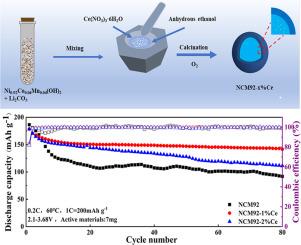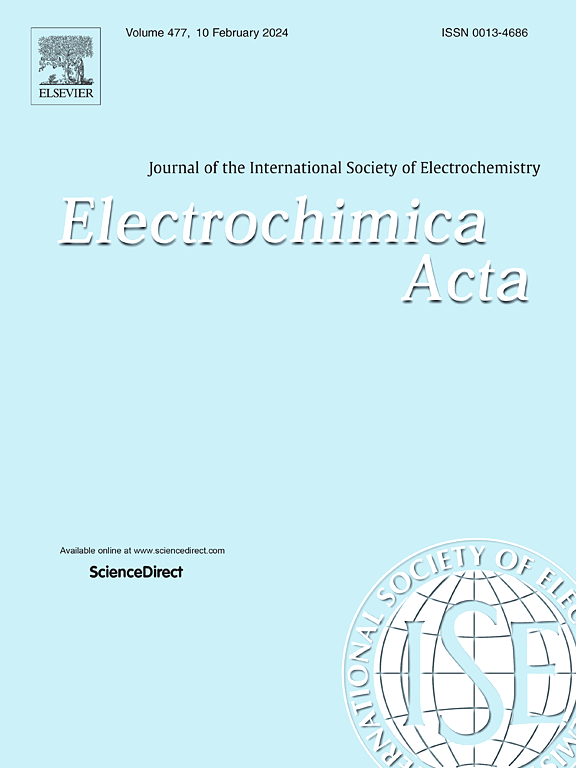Surface-to-bulk synergistic modification enables stable interface of Ni-rich oxide cathode for all-solid-state lithium batteries
Abstract
All-solid-state lithium batteries (ASSLBs) are supposed to a highly forward-looking battery technology by reason of their conspicuous energy density and excellent safety. Ni-rich layered oxide cathodes have been extensively studied in ASSLB systems with sulfide electrolytes owing to their high voltage and preeminent specific capacity. However, the electrochemical performance of ASSLBs is severely degraded due to the interfacial physical contact failure, space charge layer effect, and chemical/electrochemical side reactions between sulfide electrolytes and Ni-rich oxide cathodes. In this work, the surface of LiNi0.92Co0.04Mn0.04O2 (NCM92) is coated with a nano-level CeO2 buffer layer and is simultaneously doped with Ce element (NCM92–1%Ce) by one-step wet chemical method. Ce doping is beneficial for maintaining structural stability and suppressing irreversible phase transition. The CeO2 buffer layer can efficaciously avoid the oxidation and decomposition phenomenon at the interface between NCM92 and sulfide electrolyte. As expected, NCM92–1%Ce cathode shows the discharge specific capacity of 141.46 mAh g−1 after 80 cycles at 0.2C with 79.32% capacity retention rate, which is much higher than that of the unmodified NCM92 cathode. The results indicate that the surface-to-bulk synergistic modification strategy can successfully improve the structure toughness and interface stability of Ni-rich oxide cathode for ASSLBs with sulfide electrolytes.


| 公司名称 | 产品信息 | 采购帮参考价格 |
|---|
 求助内容:
求助内容: 应助结果提醒方式:
应助结果提醒方式:


